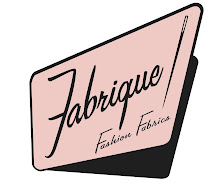1. Selecting a Complicated Project
If you don't have a lot of sewing experience, don't try to tackle a wedding dress or a tailored suit jacket. Look for beginning patterns that have words such as "easy," "simple," and "quick."
2. Using Inferior Tools and Materials
No one does their best work when using cheap and/or poorly designed tools and materials. Always choose the best you can afford, even if it means waiting awhile before you have all the tools you'd like to have. Add good quality fabrics and thread, and you'll have a much more pleasant sewing experience!
3. Starting with a LARGE project
When learning a new technique or working with a new material, always start on a small scale. Learn the necessary techniques on a project that's easy to handle, then move on to something bigger.
4. Selecting the Wrong Fabric
Always check the back of the pattern envelope for "Suggested Fabrics" and select a material similiar to those listed. You may not be familiar with all the types listed, but you'll have a better idea of the sort of fabric for which the pattern was designed. For example: don't choose a soft, drapey, lightweight fabric for a pattern that recommends "firm, woven fabrics such as suiting, twill, denim;" on the other hand, don't use a stiff fabric when "lightweight, soft wovens such as challis, rayon, and silk" are suggested.
5. Using the Wrong Needle
While the Universal needle size 80/12 is great for most sewing projects, it can cause problems on others, particularly when stitching with specialty threads and/or fabrics. Always choose a needle that is suited for the technique you are stitching.
6. Using Poor Quality Thread
Do you constantly have stitch problems? If the thread you're using is a "5 spools for $1" special, the problem isn't you or your machine, it's the thread. Cheap thread is just that - cheap. Using good quality thread not only eliminates your stitching problems, but will last longer and make your projects look more professional. Poor quality thread is made from very short fibers, spun together to form a strand. The resulting thread has thick and thin places that do not flow through the sewing machine evenly; it also sheds fibers creating lots of lint. Good quality thread is made from long fiber strands, is very even (which keeps the tension even), and makes very little lint. The next time you have a problem with stitches, make sure you're using a good quality thread such as Mettler or Isacord.
7. Not Utilizing Machine Accessory Feet
How many of the accessory feet included with your machine have you actually used? Nearly all sewing machines come with at least four "standard" presser feet: an all purpose or zigzag foot, a buttonhole foot, a zipper foot, and a blindhem foot. In addition to their primary functions, many other techniques can be sewn with these accessories. For instance, the guide on a blindhem foot is perfect for edgestitching and understitching, and a zipper foot is excellent for creating and inserting covered cording and piping. Read your owner's manual and other sewing books to learn more about your machine's accessory feet.
8. Ignoring Sewing Machine Features
Many beginning seamsters are unaware that their machines may have one or more of the following useful features:
--adjustable needle position, indispensable for topstitching,
edgestitching, understitching
--satin stitch, which is just a regular zigzag stitch with the stitch length reduced so that
you get a rich, full line of stitching -- great for applique.
9. Expecting Perfection in Every Project
If most stitchers never made mistakes, there would be no such tool as a seam ripper. No matter what we do, we all have to practice, practice, practice to develop new skills.
10. Not Loving What You Sew
For most people, sewing is a hobby, not a job, and as such it should be FUN! If you focus on working with fabrics that call your name and projects that inspire you, you will continue to learn and grow until stitching up "something new" is second nature.
**Article excerpt taken from http://www.berninausa.com/
Wednesday, July 8, 2009
Subscribe to:
Post Comments (Atom)

No comments:
Post a Comment